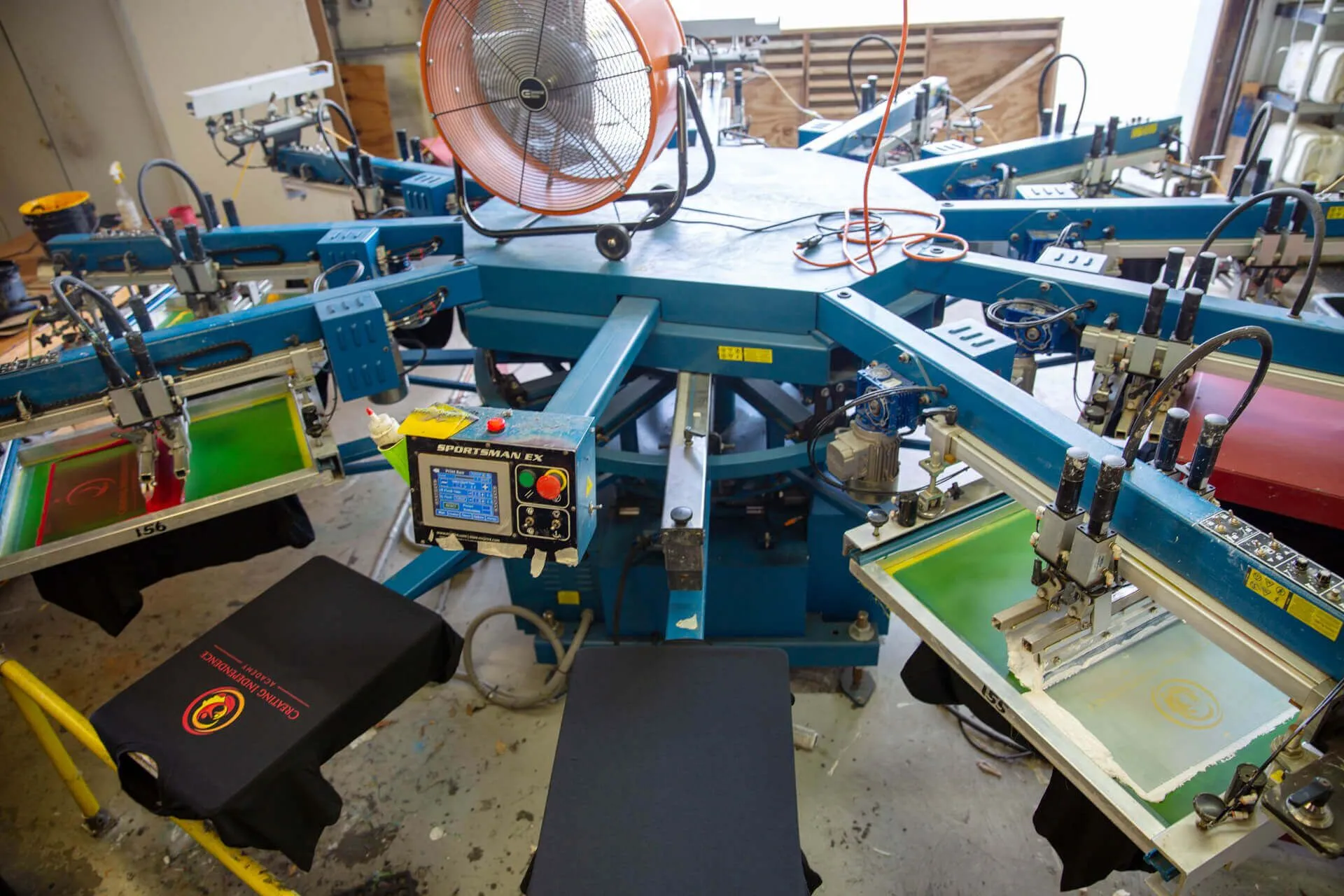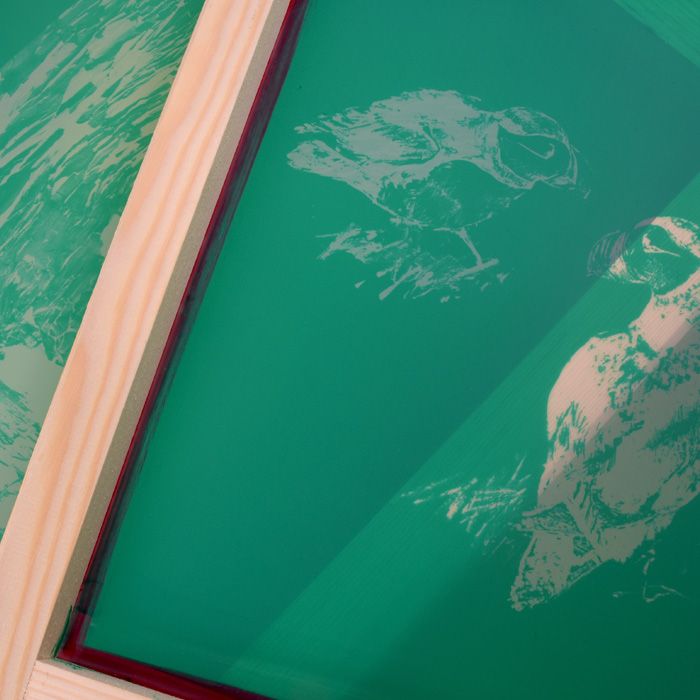Artistic Silk Screen Printing for Limited Edition Prints
Artistic Silk Screen Printing for Limited Edition Prints
Blog Article
Display Printing Uncovered: Every Little Thing You Need to Know Concerning Tee and Garment Printing Methods
If you've ever before asked yourself how those dynamic designs wind up on your preferred tee shirts, you remain in the ideal place. Screen printing is a remarkable approach that integrates art with technique, supplying limitless opportunities for creative thinking. Understanding the fundamentals, from tools to ink choices, can greatly affect your outcomes. Prepared to explore the essential components that make screen printing an art type? Let's reveal the information that can raise your projects.
The Fundamentals of Display Printing: Just How It Works
When you dive right into display printing, you'll discover it's both a scientific research and an art. At its core, screen printing entails creating a pattern, or display, that enables ink to pass through only in specific locations.
Position the display over the fabric, then use a squeegee to press ink through the screen onto the garment. Each action is vital, and understanding them will elevate your display printing skills, changing simple garments right into special, meaningful items.
Kinds of Display Printing Methods
When you understand the essentials of display printing, it's time to discover the different strategies that can boost your layouts. One popular method is typical display printing, where ink is pushed via a stenciled display. This technique is fantastic for bold, dynamic colors. There's water-based ink printing, which offers a softer feeling and is environmentally friendly, but it calls for a different method to healing.
Another choice is plastisol printing, understood for its resilience and vibrant shades, making it a favored for several brand names. Experiment with halftone printing to create gradient effects and detailed designs.
Essential Tools for Screen Printing
To accomplish stunning results in screen printing, having the best devices is fundamental. You'll require a strong screen printing frame, which holds the mesh that moves your style onto the garment. Next off, spend in top quality mops; these are crucial for using ink uniformly across the screen.
Picking the Right Inks and Products
When selecting inks and materials for display printing, you need to take into consideration the kind of ink that functions best for your task. Assume about material compatibility to assure your layouts look last and fantastic long. Also, explore green ink choices to make your printing process a lot more sustainable.
Sorts Of Display Inks
Selecting the ideal display ink is necessary for attaining dynamic, long lasting prints that satisfy your project's requirements. There are several kinds of display inks to check out. Specialty inks, such as metallic or glow-in-the-dark, can include unique effects to your styles.

Fabric Compatibility Factors To Consider
Understanding textile compatibility is important for accomplishing premium screen prints, especially because various products react distinctly to different inks. When picking inks, think about the fabric type-- cotton, polyester, or blends. For cotton, water-based inks work well, providing softness and breathability. Polyester, on the other hand, frequently calls for plastisol inks for much better adhesion and lively colors. If you're printing on blends, you may need to use a mix of both kinds. Constantly evaluate your inks on sample textile to guarantee they adhere effectively and preserve color integrity. In addition, keep in mind that fabric weight and appearance can influence the last end result, so selecting the ideal ink and product combination is vital for your job's success.
Eco-Friendly Ink Options
Eco-friendly inks are becoming a preferred choice for screen printers who want to lessen their ecological impact while preserving high quality. When choosing inks, take into consideration water-based inks, which are less dangerous and less complicated to cleanse up contrasted to standard solvents.
Additionally, search for inks made from sustainable sources, such as soy or vegetable-based choices. By selecting the right inks and materials, you'll not just create spectacular designs but also add to a more sustainable printing procedure. Make the button, and your prints will mirror your dedication to the atmosphere!
Preparing Your Design for Screen Printing

File Style Needs
To guarantee your design looks vivid and sharp on textile, you'll require to pay close focus to submit format demands for display printing. Make certain your style has a transparent background to protect against undesirable white sides on your prints. Maintain shade modes in mind; CMYK is common for screen printing, so convert your RGB develops accordingly.
Shade Separation Techniques
Shade splitting up is a necessary action in preparing your design for display printing, and grasping it can significantly boost your print high quality. You'll require to break your layout into specific colors, as each shade requires a separate display throughout printing. This precision not just assures precise shade representation but additionally improves the printing procedure.
Resolution and Dimension
Achieving the very best results in display printing begins with ensuring your design has the ideal resolution and dimension. Ideally, your art work needs to be at the very least 300 DPI (dots per inch) for sharp, clear prints. Your final item could look amateur and pixelated. if you use reduced resolution.
When it involves size, think about the measurements of your print area. Style your art work to match the final print size, preferably creating it in the actual measurements you'll be publishing. This way, you'll stay clear of any unanticipated scaling issues.
Always examine your style in both vector and raster layouts. Vector graphics can be scaled without losing high quality, making them ideal for screen printing. Preparing appropriately will guarantee your design looks amazing on every garment!
Step-by-Step Screen Printing Process
Display printing is a vibrant process that allows you to produce lively layouts on various surfaces. To get going, you'll need a display, emulsion, and your chosen ink. Prepare your screen by cleaning it thoroughly. Next off, apply the solution evenly and allow it completely dry in a dark location. Once completely dry, expose your screen to light with your design positioned on it, which will certainly harden the solution where the light hits, developing a pattern - screen printing kit.
After cleaning out the unexposed emulsion, your display prepares. Establish it up on your printing surface and straighten your garment below it. Put ink onto the display and make use of a squeegee to press the ink through the pattern onto the textile. Raise the screen thoroughly and allow the print completely dry. Lastly, treat the ink utilizing warm to ensure sturdiness. That's it! You've effectively display printed your layout.
Tips for Successful Screen Printing Projects
While you're diving right into your screen printing tasks, remember that prep work is vital to success. Start by gathering all your materials-- inks, squeegees, garments, and displays. A clean work area helps protect against undesirable mistakes, so clean up before you start.
Following, confirm your artwork is high-resolution and effectively sized for your garment. Test your screen for correct exposure and tidy it completely to stay clear of spots. When blending your inks, comply with the manufacturer's standards to achieve the best consistency.
Throughout printing, apply even stress with your squeegee for regular results. Do not rush; take your time to confirm each print meets your requirements. After printing, allow your garments dry entirely before taking care of or packaging them.
Lastly, always maintain a sample of your help future recommendation. This method, you can evaluate your progress and boost your methods gradually. Satisfied printing!

Regularly Asked Concerns
Exactly how Long Does It Require To Set up a Screen Printing Work?
Establishing a screen printing task typically takes around thirty minutes to an hour. You'll prepare website link the screens, mix inks, and readjust journalism. The time differs based on complexity and experience, so stay arranged!
Can I Publish on Various Material Enters Using the Very Same Strategy?
Yes, you can print on various fabric types utilizing the very same technique, but you'll require to adjust your inks and setups. Some materials take in ink in different ways, so trying out warranties the finest outcomes for every product.
What Prevail Errors to Avoid in Screen Printing?
When display printing, avoid common errors like making use of the incorrect ink, disregarding correct exposure times, or skipping pre-press checks. Always websites examine your configuration and preserve tidy displays to assure high quality results each time.
Just How Can I Correctly Tidy and Preserve My Display Printing Tools?
To appropriately tidy and keep your display printing equipment, you need to frequently clean screens with appropriate solvents, examine squeegees for wear, and ensure all devices are stored dry and dust-free. Uniformity avoids expensive repair services and improves efficiency.
Is Screen Printing Eco-friendly Compared to Various Other Approaches?
Display printing can be more eco pleasant than various other techniques, specifically if you utilize eco-conscious products and water-based inks. By selecting sustainable products and methods, you lower waste and lessen your effect on the earth.
Display Printing Uncovered: Whatever You Required to Know Regarding T-Shirt and Garment Printing Methods
At its core, display printing involves developing a stencil, or display, that enables ink to pass via just in certain areas. Placement the display over the fabric, then utilize a squeegee to press ink via the screen onto the garment. One popular approach is traditional screen printing, where ink is pressed through a stenciled screen.When selecting inks and products for display printing, you need to take into account the check it out kind of ink that works best for your job.
Report this page